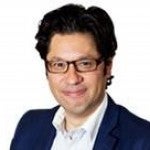March 30, 2017
“Specialty Lines Are All About Opportunity”
When we started RMS almost 28 years ago, the Specialty and E&S markets were among the first to embrace the benefits of catastrophe modeling. In many ways, I learned about (re)insurance at the knee of the specialty markets, which gave me an appreciation of the sophisticated and myriad ways this market provides coverage and underwrites business. What struck me then, as it does today, is the entrepreneurial nature of the specialty lines. Underwriter-driven and close to their markets, they are constantly boxing-on-their-toes to identify new opportunities to offer innovative coverage and to write profitable business.
Last week, during our annual client conference Exceedance 2017, I welcomed almost 900 participants across clients, partners, and our RMS experts and client teams. During the three-day conference, we convened a Specialty Roundtable with a cross-section of our clients from the U.S. specialty lines market to discuss the priorities for this dynamic sector of the industry.
The discussion was lively and ran across several themes, from identifying new opportunities in today’s market, to the benefits of well-informed stakeholders, to competing on data in a market increasingly driven by agile, real-time analytics.
Here are some highlights from our discussions:
Baking A Bigger Pie
“Specialty lines are all about opportunity.” said one participant, and from the discussion it became clear that the protection gap isn’t just in emerging markets. Even in the U.S., penetration and coverage for earthquake and flood risk is limited relative to the underlying exposures. Another participant stressed the need to move beyond the status quo, stating “It’s not about competing in a zero-sum game; we need to expand the market.” But although it was recognized that the current market has its challenges, one participant remarked that “…within every market there is opportunity.” We also discussed how new RMS models for earthquake and flood can help firms gain new insights to better identify and write quality business to expand the pie.
Educating the Market
Another imperative, one that came through loud and clear during the discussion, is the importance of a well-informed market. Not just for the underwriters, but also upstream with the producers and buyers. The group felt that there continues to be too much focus on using average annual loss (AAL) as the basis for placing individual accounts, with an insufficient understanding of the standard deviations, tail-correlations, and contributory metrics. This is particularly the case for earthquake risk, which is the quintessential tail-risk peril. With the April release of the updated RMS North America Earthquake Model, we’re giving clients a more complete view of the risk, with the ‘tails’ of the exceedance probability (EP) curve playing an even more important role than in the past. We discussed steps RMS is taking to inform key stakeholders, and we will continue to do more to be proactive and educate the entire market.
The Analytic Enterprise
Analytic agility was a constant theme throughout our discussion, with one participant remarking “With analytics, you’re either on the bus, or off the bus.” It was agreed that there is no half-way measure to adopting analytics. All participants emphasized the central role of the underwriter in the risk-decision process, applying their experience and judgement, supported by analytics to make sound decisions. However, there was much discussion that underwriting, portfolio management and analytics need to be increasingly agile and more tightly coupled. Statements such as “I need real-time,” were made and why critical up-to-date portfolio information is needed to be able to proactively manage their book. The importance of dynamic insight was emphasized “…underwriting works in lock-step with the portfolio; you can’t look at one without the other, particularly in this market.” And the need for empowering underwriters with analytics will only grow as “…you can never have enough data,” with the market now “more data-driven than ever.”
Continuing to stay close to what is important for our clients and their markets is a strategic priority for RMS. At a time of great change across the industry, agility is instrumental to mitigating risks and seizing new opportunities, and the specialty markets are at the forefront.…



